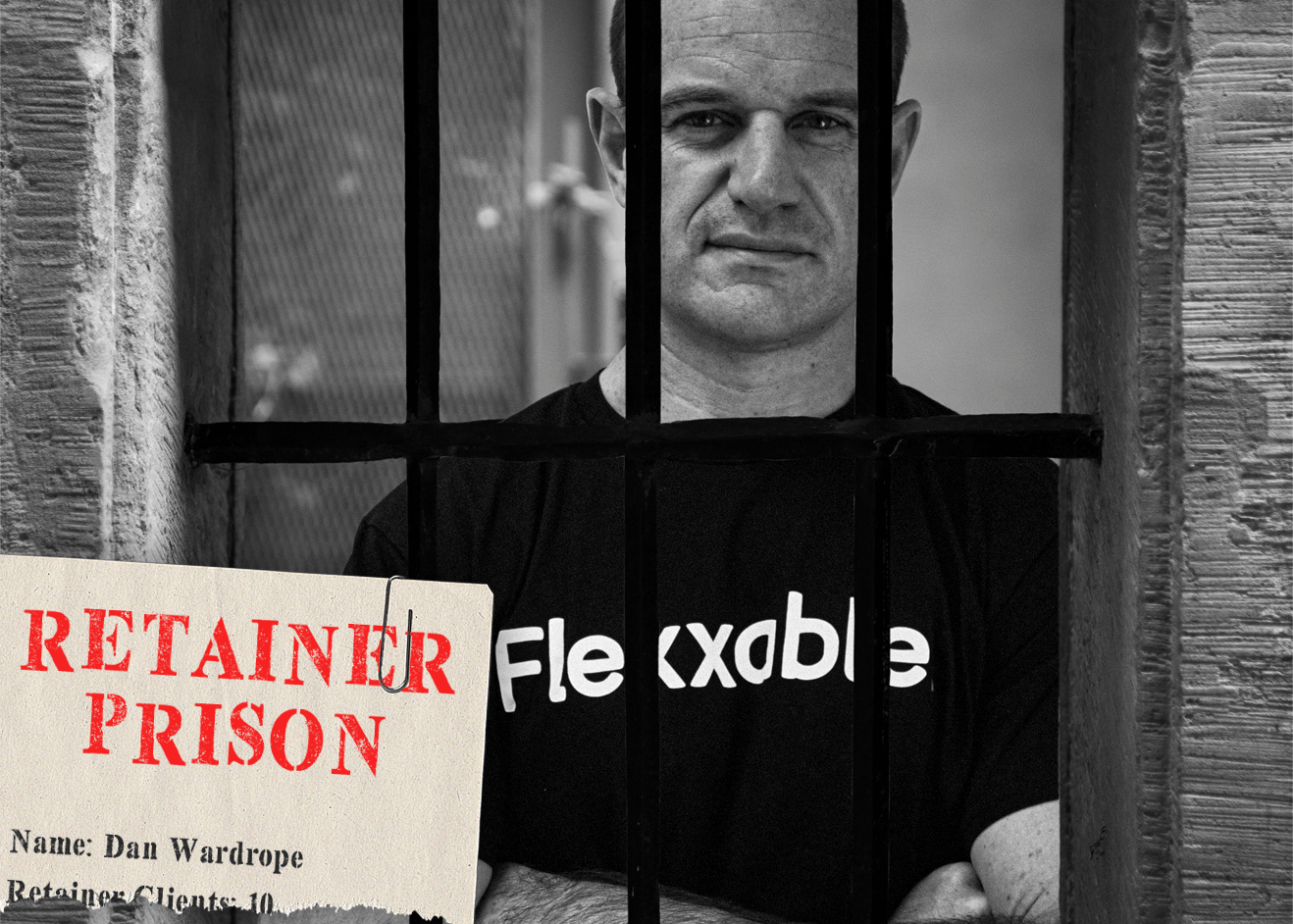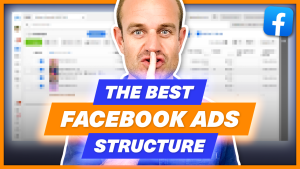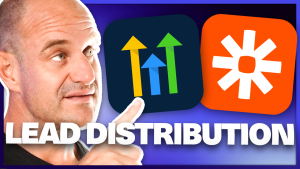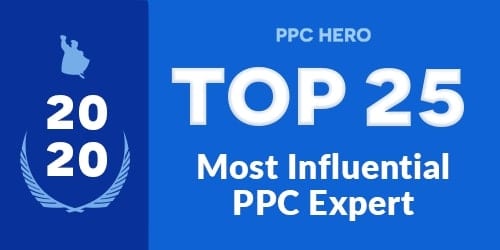Matt had spent the last six years carving out a very successful career as a professional speaker. However, with a new addition to the family on the way, Matt wanted to stay in more and travel less.
Once he’d started Dan Wardrope’s Pay Per Lead Agency Blueprint course, he knew that building his own lead gen company was the way to go.
Video Time Stamps

Professional Speaker To Building A Company: 01:20 – 03:17
Struggles With SEO And Local Clients: 03:17 – 06:59
Finding His First Client: 06:59 – 12:14
Agreeing on The Cost Per Lead: 12:14 – 16:51
Finding The Right Client: 21:09 – 23:07
Competition in PPL Niches: 26:53 – 31:16
Matt’s Plans For The Future: 31:16 – 34:55
Other Platforms Like Taboola & GDN: 34:55 – 36:09
Matt’s “Evergreen” Client: 36:09 – 39:48
Before Matt Tenney Found Dan Wardrope’s Pay Per Lead Course
Before Matt found Dan Wardrope’s Pay Per Lead course, he’d spent six years as a professional speaker.
He had about 30 to 50 gigs a year, inspiring business leaders to put their staff at a higher priority than profit. After all, if the team are well looked after in any given company, the profits will soon follow.
It wasn’t long before Matt ran into a well-known author, who suggested he write a book about the subject.
So Matt did, and his book was incredibly successful. He then wrote a second book on mindful leadership, which was published by Wiley.
His career flying high, Matt wasn’t going to give up his passion any time soon. But then, four years ago, his wife announced that they were pregnant.
With his professional speaking business at its peak, Matt spent a lot of the month travelling from venue to venue.
He realised that, if he carried on, he’d miss some of the most precious years of his baby son’s life.
From SEO To Pay Per Lead
With a bit of a background in marketing, Matt realised he could kill two birds with one stone. Instead of travelling around, speaking to managers about the importance of thriving company culture, he could build his own business from the ground up.
A business where the top priority was the employees and their happiness. It also meant that he’d no longer have to travel several times a month to make a living.
Starting with the marketing experience he’d accumulated from his speaking work, Matt invested $15,000 on SEO courses. He’d heard that SEO was (and still is) a valuable skill.
But it’s also hard work with little immediate reward. Since Google introduced Google Penguin, blackhat SEO techniques no longer have any place on the net. A page that used to take a few hours to get to Page One would now take months.
Disheartened with SEO, Matt knew that paid lead generation was a way to make real money, relatively fast.
He was lucky enough to bypass the usual retainer contracts, and found a course that focused on the Pay Per Lead model.
But the guys running the course concentrated on getting local clients, not national.
Most lead generation experts agree that local clients are challenging to work with. Here’s why:
1. They hardly ever have a rigorous system to handle and process large volumes of leads.
2. Small businesses rarely have a dedicated sales team who can close. If you’re generating leads for a local dentist, for example, the “sales team” is probably Barbara on the front desk. Because Barbara hasn’t had any sales training, or got the time to chase prospects all day, those leads will go cold. The client will blame your lead quality but, in reality, they’re just incapable of following up.
3. The churn rate with local clients is incredibly high.
4. Many small and local businesses are unable to scale, meaning they’ll never be able to buy a significant quantity of leads. As a result, your income potential is severely limited.
5. Small business clients will often treat lead gen agencies as an off-site branch of their company, rather than an investment or asset. Clients will speak to lead generators as if they’re the boss, and the power dynamics will be all over the place. This is exactly what you wanted to avoid when starting your own business.
Matt struggled with local business clients until he found Dan Wardrope’s Pay Per Lead value video.
He says to Dan:
“You’ve been through that pain. It was like you were talking to me…I was on this path of trying to decide which way to go with our marketing, because… working with local clients, I realised that it wasn’t going to scale.”
How Dan Wardrope’s Pay Per Lead Course Transformed Matt Tenney’s Business
From the minute he started Dan Wardrope’s Pay Per Lead course, Matt knew that targeting national clients was the way to go.
As he explains in the interview, his number one aim was to make an awesome work culture where his employees enjoyed coming to work.
Taking on local clients, even ones who could scale slightly, meant that his net profit wasn’t going to be as high as he’d like.
Like every business owner, he needs to pay for his overheads: the office hire, the electricity, the taxes and the staff. Low ROI meant hiring fewer people, or even letting others go.
And, as it takes as much (or more!) work to cater to a local client as it does a national one, it can be easy to lose faith in your agency.
Now, thanks to Dan Wardrope’s Pay Per Lead course, Matt has found an evergreen client in the legal niche.
He also uses Dan’s course to train new team members and get them up to speed on all things lead gen.
How Matt Tenney Built His Business With Just One Client
It still shocks me that so many businesses don’t use Facebook advertising.
Before Matt offered his Pay Per Lead services, his legal client was tearing his hair out.
He had a case type that he was trying to make into a nationwide offer. With no idea how much Facebook advertising would help him (a common mistake), he dropped $50,000 on a mailer.
Not only did the guy not get a case, but he also didn’t get a single lead out of this extravagant marketing strategy.
Not a single one.
Then Matt Tenney stepped in with Dan Wardrope’s Pay Per Lead model and struck a deal. He would advertise the client’s legal services on Facebook, and the client wouldn’t pay a penny unless he got some leads.
And the initial results were fantastic. The client in the legal niche wanted to pay about $1000 per case, but Matt managed to get him cases for under $800 with the price he was charging for leads – while still making a good profit margin.
In fact, the leads were so numerous, the legal client hired three more people to act as closers.
When it came to working out the cost per lead, Matt worked backwards. (If you want to look at my own formula for working out the cost per lead, read this post).
He knew his client wanted cases for $1000 each. Matt knew that the client would be able to convert one lead out of every 10 to 15, due to his recent spate of hirings.
Matt thought they should charge between $80 to $100 per lead. He opted for $80 for some wiggle room with the margins.
Over time, the pixel got smarter and much better at identifying audiences. The cost per lead went down significantly, coming to about $23 per lead across the state.
$80 – $23 = $57. If the legal client orders 100 leads a week, that could mean a staggering $22,800 profit a month.
All this from just one client.
Oh, and if that sounds good, Matt can generate between 100-150 leads per day.
Dan Wardrope’s Pay Per Lead course helped Matt Tenney land a client that will bring home a solid ROI for the foreseeable future.
Since he started making money with the Pay Per Lead model, Matt has hired two new people and has a secluded office space next to the Cumberland River, 15 minutes away from Nashville, Tennessee.
Does Matt Tenney Plan To Get More Clients?
His employees are doing a little bit of prospecting, but Matt considers his current lead gen customer to be his “dream client”.
He’s also focused on building a digital product, a course, to help people grow their own speaking business.
Matt admits that he’s not focused on lead generation 100%. However, he genuinely feels that if lead gen were his one career path, he’d have a seven-figure agency by now.
Considering he started Dan Wardrope’s Pay Per Lead course less than a year ago, that’s quite an achievement.
He says that, compared to retainer pitches, getting clients on the Pay Per Lead is so easy.
See, when it comes to retainer contracts, getting clients on board can quickly become a living nightmare.
The hundreds of cold calls you make all follow a script that goes like this:
“Mr or Mrs Client, I need you to sign a three-month contract.”
Followed by:
“Mr or Mrs Client, I need you to commit to a minimum advertising spend.”
And then:
“Mr and Mrs Client, I need to charge you to fix up your landing pages.”
When you’re following a script like that, you’re essentially asking clients for a five-figure sum, upfront, without a shred of evidence that you’ve got what it takes to generate leads for them.
It’s no wonder that so many businesses – businesses that sorely need leads – aren’t so keen to take up your offer.
With the Pay Per Lead model, the offer is straight to the point: leads and nothing else.
Depending on the deal you make, you could offer to be paid on conversions. I.e. you’ll be paid a fee per converted lead. Sure, it has a higher risk than a retainer contract, but the higher risk balances with the bigger reward.
With Dan Wardrope’s Pay Per Lead course, approximately 95% of the people who take the program land their first client within two weeks.
With Pay Per Lead Clients, You Can Afford To Be Choosy
When it comes to getting clients, Matt recommends taking the time to find the right ones for you – especially once you’ve got some experience.
When you’re just starting out, and the clients are getting interested, it’s easy to get excited and say “yes” to everybody.
However, clients, like leads, come in various quality. Before you accept anyone as a client, you should look for the following red flags:
1. Has the client worked with agencies before? How did they get on? Like the guy who describes all their exes as “crazy”, if the client has always had bad experiences, the problem might be with them, not the agencies.
2. How often do they hit their monthly targets? If they always fall short, that may be to do with their follow-up system, not the quality of the leads.
3. Does the client have an experienced sales team, or do they rely on a receptionist/part-time telemarketer?
4. How well does the client know their target market? Before you generate any leads, you’ll need to know the ideal customer’s gender, age range, occupation, location, pain-points, the reason for buying, etc. If the client gives vague answers, or dodges the questions, this is a bad sign.
5. How do they want their leads delivered? If the client wants a large volume of leads sent via email, that suggests their follow-up system isn’t up to scratch. If your client is serious about bulk-buying high-quality leads, they’ll have an API integration with a CRM.
6. What does your gut tell you? If a potential client takes forever to respond to an email, or are impossible to contact by phone, you can imagine what they’re like when it comes to lead follow-up. If alarm-bells ring when speaking to someone, trust your gut and decline the offer.
Matt also advises that, once you’ve got a client on board, you should be careful about the expectations you set for them.
The Pay Per Lead model is still a new concept, so some clients can be unreasonable about what to expect. They may want a 100% contact rate, or demand “favours for free” as they would with someone on a retainer contract.
Explain that Pay Per Lead isn’t a “magic pill”, and roughly 10% of leads won’t pick up the phone, even if they went through the entire funnel.
Another small percentage may be fake leads, even with lead validation systems in place. Some will have just changed their minds.
If the client isn’t happy with the contact rate of your leads, it’s up to you to find a solution. Check your funnels, buy some lead validation software, make sure your client’s follow-up system is as mature as it should be.
If your client requests SEO help, fan page building, or website reconstruction, it’s up to you to decide whether you think that work is worth your time.
If not, or if the client wants you to do it for free, re-establish your professional boundaries.
After all, as Matt Tenney says, you’re responsible for generating high-quality leads and nothing else.
What Do Matt Tenney’s Funnels Look Like?
Since Dan Wardrope’s Pay Per Lead course, Matt uses a mix of advertorials and quizzes to qualify his leads.
As he explains in his interview, one of the most precious resources in the course was the introduction to LeadsHook.
Founded by Nik Thakorlal, LeadsHook is a quiz-making/decision-tree software that can create interactive customer experience across your entire funnel.
Before Matt took Dan’s Pay Per Lead course, he was using Typeform. Typeform is a web-based platform used to create anything from surveys to apps without needing to learn any code.
The key difference between Typeform and LeadsHook is the ability to make decision trees.
The easiest way to describe a “decision tree” is to ask you to picture a flow chart.
This flowchart can have as many different “branches” as you deem fit, and each answer given will take you further along to a final objective.
For the sake of lead generation, the destinations are usually: “we can help you” or “sorry, we can’t help you”.
This “decision tree” software is a great way to separate qualified leads from the unqualified right from the get-go.
However, the real value that comes with a decision tree is its pixel-seasoning abilities.
The more people that take the quiz, the more data the pixel can collect. Chiefly, you’ll be able to see what kind of people make it to the “yes we can help you” page.
You can then use that info to make Facebook target similar people with its algorithm.
If the quiz isn’t generating as many leads as you like, you can also use the pixel data to see when a majority of people are clicking away from the page.
That’s super-helpful for when you want to make any changes.
Matt Tenney also uses advertorials in his sales funnel.
Briefly, advertorials are long-form ads written in the style of an article, with the purpose of getting the reader to take a specific action.
Advertorials are usually 500 – 3000 words long, and they’re all over the internet. If you’ve never heard of them before, chances are you’ve probably read one. Think back.
Have you ever read an article, only to find a call-to-action at the end of it? If so, you’ve read an advertorial.
Advertorials are designed to gently move the audience from curiosity in your product/service to making a micro-commitment, such as giving their email address or telephone number.
The only reason they’d do that is if they develop trust in your company/brand.
The advertorial informs the audience about the product/service, highlighting its features and benefits.
Advertorials also help sort the wheat from the chaff. If someone isn’t genuinely interested in your product/service, chances are they won’t stick around for 500+ words of material solely on that.
If you use an advertorial and a quiz, as Matt Tenney does, the leads that come through your funnel will be super-qualified, and much more likely to pick up the phone.
Since he’s been using quizzes and advertorials, as suggested in Dan Wardrope’s Pay Per Lead course, Matt has seen a lead contact rate of 60% and upwards.
Matt Tenney’s Plans For The Future
Matt is looking into hiring more people to help run the agency side of his business. His job will be to empower them and give them what they need to scale, following the advice from Dan Wardrope’s Pay Per Lead course.
With his legal client, Matt’s run Facebook ads in a third of the US, with plans to run ads in the next two-thirds over the coming months.
He’s currently spending around $3000 a day on peak ads. Because of the volume of leads his team are generating, Matt estimates it will take nine months to advertise to the entirety of the US.
Then, once he’s advertised to the whole country, state by state, he plans on doing the same thing all over again. Because the audience in each state is so massive, with new people demanding legal services every day, Matt views his client as an “evergreen” source of income.
Thank you, Matt, for this fantastic interview. Readers, watch it all, as it contains some amazing insights into the Pay Per Lead industry, and how you can get your own lead generation agency up and running.
Dan Wardrope’s Pay Per Lead Course
Interested in Dan Wardrope’s Pay Per Lead course? Dan’s looking for some more dream students, like Matt Tenney, right now.
Dan’s Pay Per Lead course can get you the kind of massive results Matt has shared with you, in this post, today.
If you want to find out more, or whether this is the course for you, sign up for a 1on 1 Pay Per Lead consultation session today.
If you are ready to:
1) Find a better way to land more red-hot national level B2C clients who are prepared to buy hundreds of leads per day
2) Improve your Facebook advertising skills, and learn how to deliver volume and quality from the Facebook platform
3) Move away from low-value retainer contracts and move to the Pay Per Lead model
Then Dan, or one of his specialised team, can offer you a specific and custom-tailored Pay Per Lead consultation session. This consultation will help you solve the two biggest problems most lead generation professionals face:
- How to identify and land these national-level clients, with 5-6 figure monthly advertising budgets
- How to have a system that takes Facebook traffic and converts it into high-quality leads every single time
And, what’s more, the consultation session is FREE.
How To Escape "Retainer Prison", Wrestle Back 100% Control Of Your Time AND Give Yourself A Raise By Firing Your 10 Bosses (Clients)

Lemme show you how to fire “pain in the butt” $2,000 a month retainer clients and replace them with $2,000 a DAY Pay Per Lead PARTNERS. Just press the button below quietly (so the warden doesn’t hear) and I’ll slide over my free “Retainer Prison” Escape Plan.








